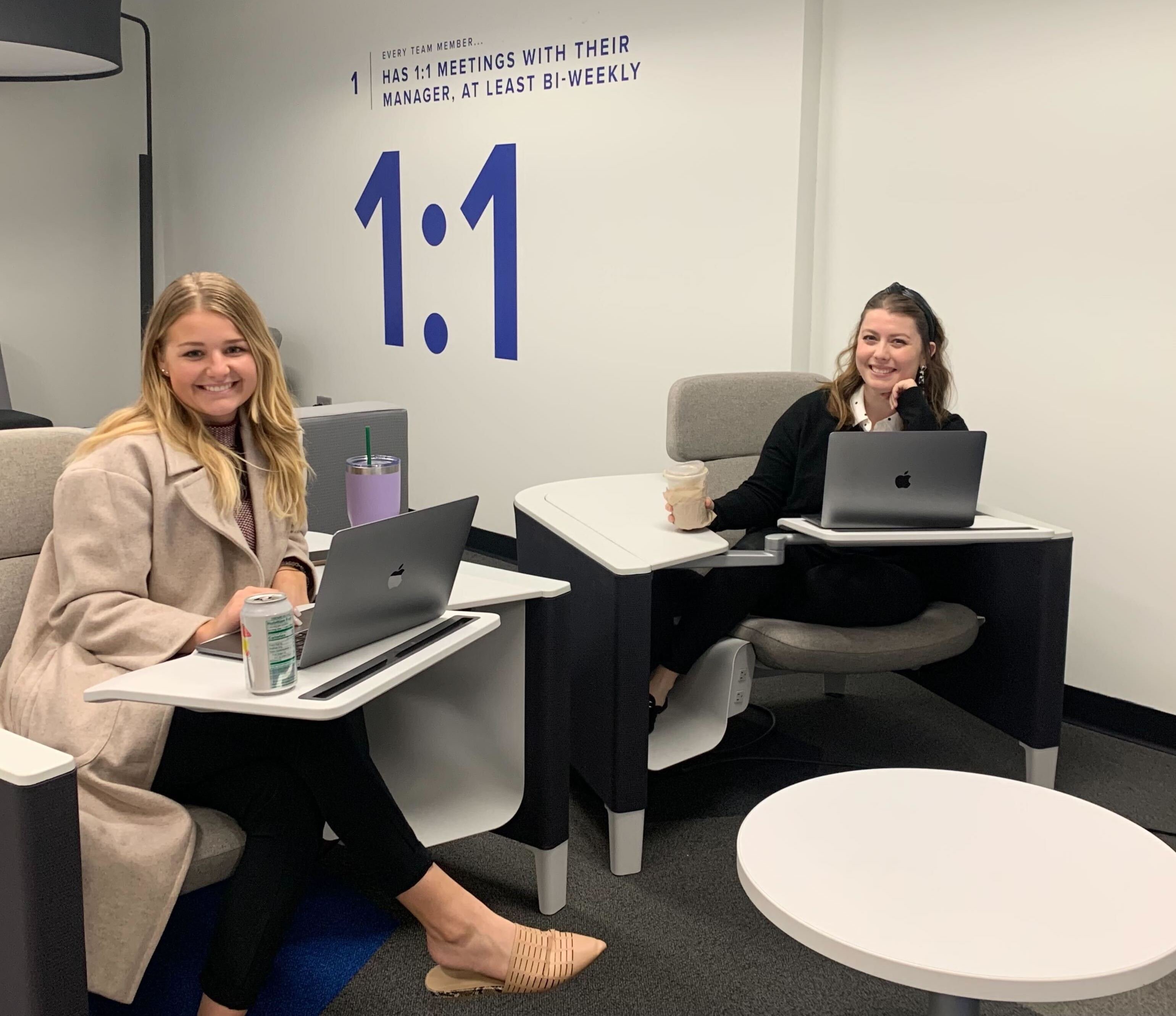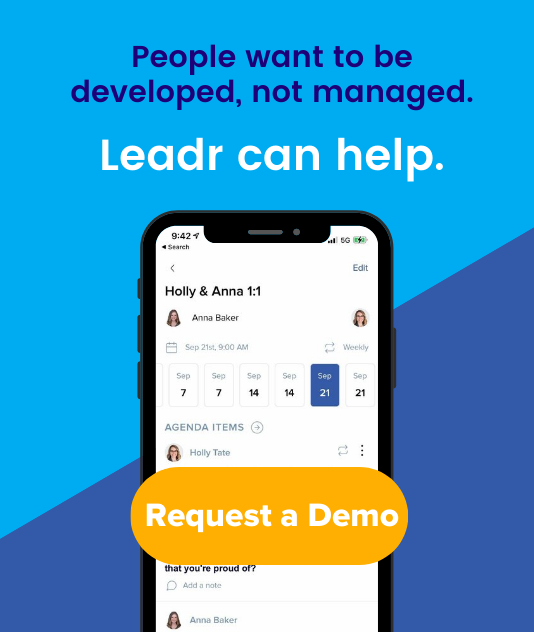5 Pillars for Conducting Effective 1:1 Meetings
Leadr is built on the power of 1:1 meetings. They are essential to what we believe and what we advocate. If they are done well, or even just consistently, 1:1s will significantly improve trust and relational equity on your team.
Why should I care about effective 1:1s?
You may be asking yourself this question. Before we get to the 5 Pillars for conducting effective 1:1s, it is critical that you understand why effective 1:1s are fundamental to success at every level of your organization.
At Leadr, we have found that the road to becoming an ineffective team is paved with:
As a manager…
-
Prioritizing projects > people
-
Becoming swamped with busy schedules
-
Giving up on the HARD work
As a team member…
-
Dreading accountability
-
Taking concerns to the wrong people
-
An attitude of what is in it for me? > How can I help the team win?
Don’t just take our word for it; national polls and distinguished ministry and marketplace leaders are echoing this truth about one-on-one communication.
According to Gallup, only 30% of staff are actively engaged in their workplace. The report states that engagement is highest with those that have some form of weekly communication.
Alex Turnbull, CEO & Founder of Groove, says, “Cultures where important things get left unsaid are unproductive, unpleasant and frankly toxic.”
Saastr Founder Jason Lemkin says, “You don’t have time for 1-on-1s. This is true. The thing is, you also don’t not have time. There isn’t a better investment you can make in people than meeting once a week, or at least, once every 2 weeks. Get it on the calendar.”
Getting 1:1s on the calendar and consistently showing up to them is not easy. However, it is an essential part of developing a sincere and enduring culture on your team.
Below are 5 Pillars for conducting effective 1:1s. Use these to take advantage of the time you get to spend with your team--these 5 discoveries have made a lasting difference on ours.
5 Pillars for 1:1s
-
Present
-
1:1s aren’t effective if your mind is elsewhere. Be present.
-
What would it be like to sit in the other person’s seat?
-
For managers: you might spend all day in meetings, but remember this might be one of few for them (make it a safe space).
-
-
Prepare
-
Preparing for conversations in advance shows the other person you value their time.
-
Share agenda in advance. Tip: schedule five minutes the day prior to add your thoughts.
-
Collaborate on agenda: both people should have contributions to the discussion. If meetings are often one-sided, this time may not be enough of a priority.
-
Balance projects, care, and development: Not all meetings will have all three, but all three should be regular.
-
-
Challenge: Take a look at your 1:1s this past month. If you haven’t made intentional time to discuss projects, growth, AND life outside work, something is missing.
-
-
Location
-
Location can set the tone for the conversation.
-
Find a safe and secure location to have one-on-one meetings:
-
Office
-
Conference room
-
Coffee shop
-
Walk
-
-
This produces trust and candor in the meeting.
-
Even while remote--be thoughtful about your location.
-
-
Note: What feels safe and secure to you may not feel safe and secure to the other person.
-
-
Documentation
-
“If it isn’t written down, it didn’t happen.”
-
If there are any action points or takeaways from a meeting, the person responsible should send an email after the meeting recapping what was said.
-
In general, note-taking and recaps (if applicable) show respect and accountability and that you will remain on top of the task.
-
-
Personalization
-
With busy schedules, it’s easy to get caught in the trap of routine.
-
Don’t fall into the trap of approaching each 1:1 the same. Some tips:
-
Start each working relationship with: “What you should know about working with me.”
-
Use those answers to find out what makes them unique.
-
Build your 1:1s based on that.
-
Continue to iterate and adjust over time.
-
-
To measure the effectiveness of your 1:1s, consider these questions when the meeting is over…
-
Are you leaving energized, enthusiastic, and motivated?
-
Are you smiling?
-
Or are your shoulders sagging, eyes glazed, and feet dragging out of the meeting?
....that’s your scorecard as a leader. If you implement the 5 Pillars above, you will find yourself walking out of meetings doing #1 and #2 much more often than #3.
We live by this motto at Leadr:
Healthy work cultures are driven by healthy relationships.
Healthy relationships are driven by meaningful conversations.
So, Where to Start?
-
Establish a Rhythm: Find a recurring time on the calendar to sit down for 30+ minutes, at least once every two weeks.
-
Communicate Openly: Set clear expectations, and review from time to time to understand what works best for you.
-
Complete Your Profile: Take five minutes to share your personality types, bio, and favorites in Leadr.
Share this
You May Also Like
These Related Stories

3 Strategies for Effective 1:1s

4 Practical Tips for More Effective 1:1 Meetings





No Comments Yet
Let us know what you think